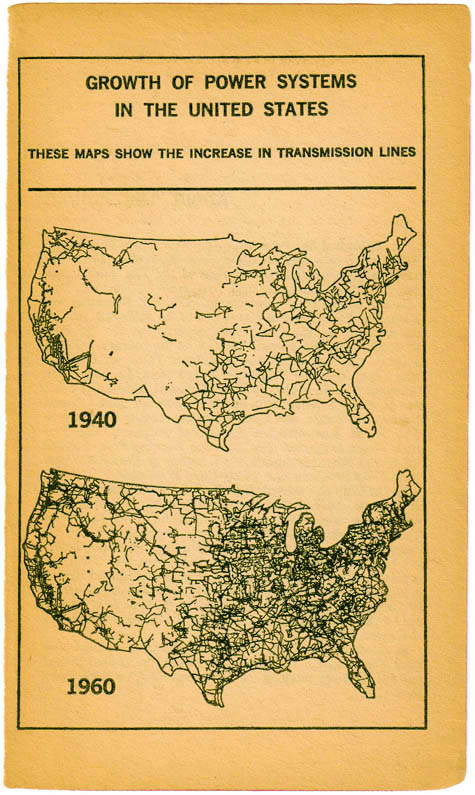 [Image: From The Night the Lights Went Out by the staff of the New York Times].
[Image: From The Night the Lights Went Out by the staff of the New York Times].
I’ll be leading a research seminar at the Pratt Institute’s School of Architecture this coming spring. I’ve decided to post the general course description here, simply because I think it might be of interest; I’m really looking forward to exploring this more in the spring.
In this guided research seminar we will look at blackouts—the total loss of electrical power and its impact on the built environment. From the blackouts of NYC in 1965 and 1977 to the complete blackout of the northeast in August 2003; from the “rolling blackouts” of Enron-era California to the flickering electrical supplies of developing economies; from terrorist attacks on physical infrastructure to aerial bombing campaigns in Iraq and beyond; loss of power affects millions of people, urban and rural, worldwide.
 [Image: From The Night the Lights Went Out by the staff of the New York Times].
[Image: From The Night the Lights Went Out by the staff of the New York Times].
But how do blackouts also affect the form, function, social experience, and even ecology of the city? What do blackouts do to infrastructure—from hospitals to police and traffic systems—as well as to the cultural lives of a city’s residents? While blackouts can lead to a surge in crime and looting, they can also catalyze informal concerts, sleep-outs, and neighborhood festivities. Further, how do such things as “dark sky” regulations transform what we know as nighttime in the city—and how does the temporary disappearance of electrical light change the city for species other than humans? This raises a final point: before electricity, cities at night presented a fundamentally different spatio-cultural experience. That is, the pre-industrial night was always blacked-out (something to consider when we read that, according to the International Energy Agency, nearly 25% of the global human population currently lacks access to electricity).
We will look at multiple examples of blackouts—internationally and throughout history—exploring what caused them, what impacts they had, and what spatial opportunities exist for architects in a blacked-out city. On the one hand, we might ask: how do we make the city more resilient against future failures of electrical power? But, on the other: how might we take advantage of blackouts for a temporary re-programming of the city?